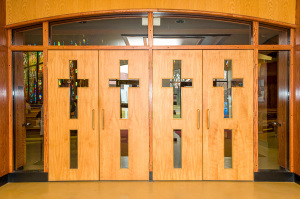Religious Leaders Rebuke Historian's Claim Resurrection Was An 'Optical Illusion'
Several religious scholars and Christian leaders have come together to refute a new theory proposed by art historian Thomas de Wesselow, who claims that the resurrection of Jesus was merely an optical illusion.
At the heart of the debate is the Turin Shroud, which is an ancient piece of cloth believed to have been used to cover Jesus after the crucifixion. Reverend Albert R. Dresibach, Jr. has presented a paper in Italy entitled "The Ecumenical Implications of the Shroud of Turin," and argued the Shroud could be seen as an important proof of the resurrection.
"History's very preservation of this Holy Cloth should alert the total ecumenical community to a divine purpose which should not-and must not-be ignored. Though no branch of Christianity has ever required belief in the Shroud's authenticity as an article of faith, many denominations are now coming to perceive that it can do much in the way of adding both depth and detail to a faith already held," he stated.
As Easter draws near, Christians around the world are reflecting on the crucifixion and resurrection of Jesus Christ, and the meaning of the cross, all of which are crucial to the faith.
As Christians prepare for this important time of the year Cambridge-based historian, de Wesselow, has authored a new book, "The Sign," which examines the famous Turin Shroud and its significance and relation to the resurrection. His argument states that people "saw the image on the cloth as the living double of Jesus. Back then images had a psychological presence. They were seen as part of a separate plain of existence, as having a life of their own," according to The Daily Telegraph.
"If you think yourself into the whole experience of the apostles going into the tomb three days after the crucifixion, in the half-light, and seeing that image emerging from the burial cloth," he explained.
But why would de Wesselow even be interested in examining the Shroud if he is an art historian?
"I just couldn't resist it as an intellectual puzzle," he told The Telegraph. "I am an art historian, not a theologian, so I can approach the problem from a new angle."
De Wesselow offers this explanation of the resurrection: "The earliest source we have on Jesus is Saint Paul, and there in 1 Corinthians 15:10 - the reference is seared on my memory - you have him saying explicitly that resurrection is not about flesh and blood."
1 Corinthians 15:10 states: "But by the grace of God I am what I am, and his grace to me was not without effect. No, I worked harder than all of them--yet not I, but the grace of God that was with me."
Generally Christian theologians believe that the Bible is not contradictory, and that Apostle Paul is rather emphasizing that Christians should be looking at a deeper spiritual meaning behind the resurrection, and that he is not denying Jesus' physical resurrection at all.
Matthew's gospel in Chapter 28:5-6 specifically recounts Mary Magdalene and another woman going to the tomb where Jesus was buried. "The angel of the Lord said to the women, 'Do not be afraid, for I know that you are looking for Jesus who was crucified. He is not here; he has risen, just as he said'."
John Munro of the Billy Graham Evangelical Association has been quoted in "Decision Magazine" as saying, "After the crucifixion the followers of Christ were devastated and defeated. But only days later they stood in downtown Jerusalem fearlessly preaching the Gospel of Jesus Christ. They continued to preach Christ even though they were imprisoned and beaten. They turned the world upside down. Why this transformation? What had happened? They had seen the risen Christ."
"The resurrection of Jesus from the dead confirms that He fulfilled His mission in coming to the earth. Jesus' mission was to die for the sins of the world (Matthew 1:21, John 1:29). On the cross of Calvary, Jesus Christ perfectly completed His sacrifice of atonement. "For Christ also died for sins once for all, the just for the unjust, so that He might bring us to God" (1 Peter 3:18). But before our Savior could bring us to God, not only had He to die for our sins, He had to rise from the dead," he added.
"Jesus' death and resurrection are the final proof that His promises about heaven are true, and that some day we can go there. He declared, 'I am the resurrection and the life. He who believes in me will live, even though he dies'," said the Reverend Billy Graham in an interview with the Gaston Gazette.





























